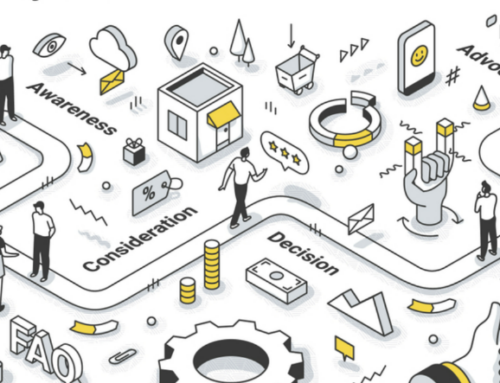About the author
Why you should pay special attention to software vendor evaluation?
Whether you’re the bank CEO or a project manager focused on a specific project, a lot is at stake when making this choice of choosing the ideal banking software vendor, especially in a crowded market offering as it is today.
That is why you should be paying special attention to the vendor’s evaluation tasks during the vendor selection process.
This means that before you buy their solution or sign a software subscription contract you should be looking at different criteria that helps you select the right vendor and an ideal solution for your bank’s digitalization strategy.
This way, when looking at different vendors that are approaching you with different solutions for the same problem you are looking to solve, you can make the best possible decision for your company.
Know your needs and what you would like to solve
As mentioned in the previous paragraph, when it comes to the software buying process, the first thing you want to know before you start shopping around is – what needs do you have and which business problems you would like to solve.
The way how you could do that is by interviewing business stakeholders and key users about the way how they operate today and what would be “the perfect world” for them. The goal at this stage is to find out exactly why your team fell like processes are nonproductive or why they find current solutions to be unhelpful.
By asking those questions you could sort of features and functionalities that would be considered “must-have” for them and which would be “nice to have”. This will help you further on in defining the next steps in the buying journey.
For tango, it takes two e.g. be sure you are aligned on processes and goals/KPIs
Usually, the focus of most software evaluations processes ends up with measuring tech parts such as feature sets against your current problems to be solved.
This is the main reason why many times what is overlooked is a thorough internal evaluation of your company’s culture, team members, resources, and current processes in place that should be aligned with the banking software vendor.
The consequences of not mapping properly your internal resources and processes – as well as both companies’ culture – are usually seen too late during the implementation phase where teams start to follow apart or disengage from each other (or the project itself) putting the end results on a low grade.
That is why it is out of the most importance to, as early as possible in the evaluation phase, check that both, your company and banking software vendor are aligned in culture, processes, and resources so you secure the project goals you put in front of the implementation teams are well managed and KPIs are achieved.
Check their credentials and get in touch with their customers
Most of the banking software vendors will provide you with (at some point of the evaluation process) some of the references they feel comfortable with and this is a step you should not neglect while selecting the right banking solution vendor.
So here we will share some tips & tricks on how to uncover the real feelings they may have about the vendor you evaluate that can help you understand better if the vendor would be the right solution for you:
1) Personally, or over the phone ask the reference customer to describe their relationship with the vendor. It is of high importance to be able to see or at least hear referent customers so you can judge from the body language and their voice how they really feel about the relationship they have with the vendor. Many times, you’d be surprised how many things will be identified from this simple open-ended question like this one.
2) Situation handling. One of the questions that you could ask the reference customer is to try to remember a tough time they had with the vendor (if possible, a concrete case) where they were less pleased with the vendor and ask them how the vendor handled the situation and what was the end result. This will uncover if the vendor is willing to put an extra mile effort into making his customers happy.
3) Mapp the scope of the services. What you need to learn from the reference is that the scope of the services you expect vendors to provide to you is something they already provided (successfully) to someone else. So, for example, you could ask the reference to give you general information of the services the vendor performed for them and learn as much as possible if those services would serve your needs.
How you could find out that information and how to approach referent customers?
The answer is – by asking a smart open-ended question that could motivate references to give you valuable feedback:
- What do you feel you achieved with the vendor of a choice?
- If you could have changed something in the relationship with the vendor, what would it have been?
- Was the vendor within the given timeframe?
- How well did the vendor understand your business needs?
- How did they handle tough situations?
- How fast they were responding to you?
- Do you have plans to work with this vendor long-term?
Secure they are here to stay – tech and business-wise
One of the “easiest” evaluation criteria someone may say. In every day-changing IT environment where we are witnessing that technology, system architecture, and infrastructural changes are made as fast as never before, you should be secured with long-term stability with the vendor you choose.
The way how banks can be ensured that vendor is here to stay is by going deeply into the technology they use, understanding, if they are using latest technologies or their foundation, is based on end-of-life technologies.
From a business point of view, it is always good to know ownership structure and their balance sheets as an investment you make in buying their product you would like to be secured with their long-term financial stability. It happened more than once that a chosen vendor got into financial issues which could reflect the project significantly.
Do not neglect TCO
Too often TCO (total cost of ownership) was heavily ignored or underestimated in the process of the enterprise banking software buying process. While things are getting better in the last few years, we would like to point out that TCO is one of the most important monetary criteria of the banking software vendor evaluation process as TCO heavily reflects the ROI you get from the software you buy.
That is why we strongly advise you to always understand what should be in the TCO estimate (licenses, implementation, upgrades, and maintenance) and use that to make better software selection decisions based on the ROI you can get.
Conclusion
At the end of the day, it is all about the relationship.
Clear communication and trust on both sides are what make a difference in the relationship between the bank and the solution provider.
All banks spent a lot of time and energy defining business goals and values they expect to get from the new banking software, so it’s important that you don’t rush the evaluation process and choose a software vendor with that you will have a long-lasting (good) relationship with.
Wondering how to start? Ask the experts:
ASEE is a digital banking solution provider with vast experience in implementing different solutions in banks of various sizes and markets. For a free consulting call or more information get in touch.






